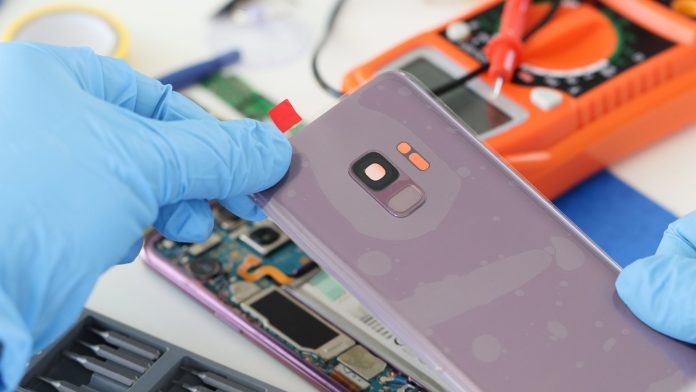
A “mobile skin” can be a real or virtual component that enhances the appearance and customization of a mobile device. A mobile skin is a protective covering, typically made of vinyl that is put to the exterior of a smartphone. These skins have a dual purpose: they protect the device from scratches and impacts while also allowing users to show their personality through different designs and textures. In the context of software and user interface (UI) customization, a mobile skin refers to a virtual theme or template that users can use to change the visual components of their device’s UI. This can include modifications to icons, backgrounds, system fonts, and color schemes, allowing users to customize their mobile experience to their liking. Mobile skins, whether physical or virtual, play an important role in creating the overall appearance of the device and boosting the user’s sense of ownership and style.
Mobile skins, whether physical covers or virtual software themes, play an important part in determining our smartphones’ visual identity. This article examines the various aspects of mobile skins, including their durability, evolution, and impact on user experience. From the physical endurance of vinyl wraps to the ever-changing environment of software-based skins, we look at the aspects that determine their lifespan and what users should keep in mind.
Contents
Physical Mobile Skins: The Vinyl Wrap Experience
One component of mobile skins is the physical application of vinyl wraps or decals to the outside of our smartphones. These wraps, which are noted for their aesthetic appeal and protection, go through a process of wear and tear. It covers material quality, application complexities, and environmental elements that influence their durability. Real-life examples and user experiences demonstrate how well-applied vinyl covers can survive for months or even years. Furthermore, we look at symptoms of wear, potential difficulties, and recommendations for extending the life of physical mobile skins.
Software-based skins: transformative themes for a dynamic experience.
Moving on to the virtual sphere, we look at the world of software-based skins that define our mobile devices’ user interfaces (UIs). Themes and skins allow users to customize their experience by switching between stock Android interfaces and manufacturer-specific overlays. We investigate the flexibility these virtual skins provide, allowing users to modify the appearance and feel of their gadgets at will. The article examines the dynamic nature of software upgrades, how they affect the longevity of a certain skin, and how mobile interfaces evolve based on user behavior. Case studies and industry trends demonstrate the constantly shifting world of UI customization.
Comparative Analysis of Physical and Software Skins
We undertake a comparative analysis of physical and software-based skins. We analyze the advantages and disadvantages of each technique, taking into account aspects such as cost, ease of application, and the ability to adapt to changing design trends like mobile skin templates. This section gives readers a thorough knowledge of the trade-offs between the tangible and the virtual when it comes to mobile skin selection.
Durability: Physical mobile skins, such as vinyl wraps or decals added to a phone’s outside, can vary in durability. The longevity is determined by material quality, wear and tear, and skin application technique.
Typical lifespan: A well-applied, high-quality mobile skin can endure from a few months to a year or more. However, it may begin to exhibit symptoms of wear, peeling, or fading over time, especially if handled frequently and exposed to environmental elements.
Mobile skins as software themes (user interface customization):
Duration: When discussing mobile skins in the context of software themes or UI customization, the term is virtual rather than physical. Users can customize the visual appearance of their device by applying various themes or skins via software settings.
Flexibility: The duration of these virtual skins varies according to user preferences. Users can alter or refresh their mobile skins as often as they want by choosing new themes or templates.
Updates: The lifetime of a specific mobile skin may also be influenced by software updates from the device manufacturer or app developers, which include new functionality or visual changes that users may enjoy.
Material quality: High-quality vinyl materials are more resistant to wear and strain, allowing them to last longer without deterioration.
Application Quality: The accuracy and competence with which the skin is placed helps to ensure its lifetime. A well-applied skin is less likely to peel or lift with time.
Environmental Factors: Sunlight, humidity, and temperature variations can all have an impact on the lifespan of physical skin.
User Handling: The way users handle their devices has an impact on the skin’s durability. Regular use, pocketing, and surface contact can all contribute to wear.
A sturdy and well-maintained physical mobile skin can usually last several months to a year while offering efficient protection and visual augmentation. Wear, such as peeling at the margins or fading, may become apparent over time.
Conclusion and Future Trends.
As we complete our look into armobile skins, we consider the interwoven realms of physical and software modification. The study concludes with observations on future trends, emerging technology, and how the concept of mobile skins is expected to evolve. Whether customers choose a protective vinyl wrap or constantly change their device’s virtual skin, the dynamic nature of mobile customization remains an intriguing part of our ever-connected digital life. To summarize, the longevity of mobile skins varies depending on whether they are physical wraps or decals placed on the phone’s exterior or virtual themes applied to the device’s user interface. Physical skins can last anywhere from a few months to a year, however, virtual skins can be altered at any time based on user preferences and upgrades.
